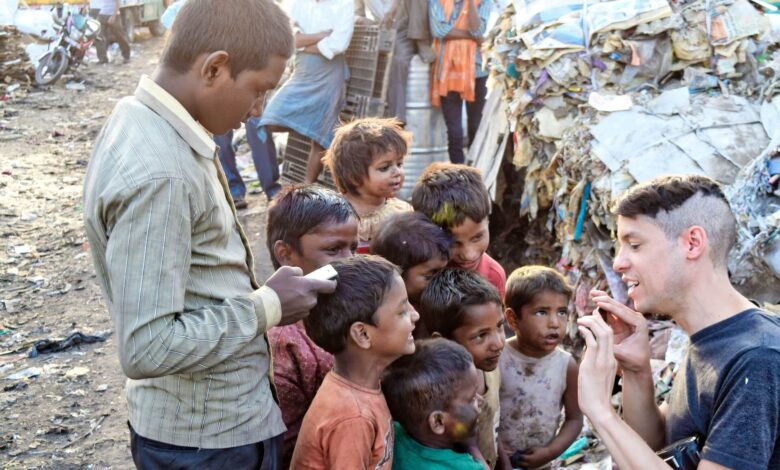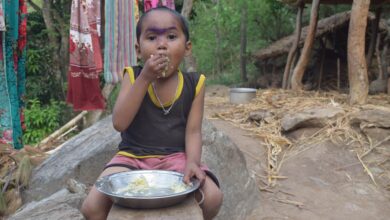Hunger Kids Food: Addressing Childhood Hunger for a Better Future

Introduction
Childhood hunger is an alarming issue that affects millions of children around the world. It is a heartbreaking reality that numerous kids go to bed hungry every night, unable to access the nutritious food they need to thrive. In this article, we will delve into the pressing problem of hunger among children, its causes, consequences, and most importantly, the solutions that can make a difference.
Causes
Childhood hunger is rooted in a complex web of causes. Poverty and income inequality are significant factors that contribute to the lack of access to food among vulnerable communities. Insufficient financial resources limit families’ ability to provide nutritious meals for their children. Additionally, food insecurity and lack of access to affordable, healthy food options in certain regions further exacerbate the problem. Social and economic factors, such as unemployment, low wages, and high living costs, also play a role in perpetuating childhood hunger.
Consequences
The consequences of childhood hunger are far-reaching and profound. Malnutrition resulting from inadequate food intake can have severe implications for children’s physical and mental health. Chronic hunger weakens immune systems, making children more susceptible to illnesses and impairing their overall growth and development. Moreover, hunger adversely affects educational outcomes, hindering cognitive abilities, concentration, and academic performance. The long-term implications extend beyond the individual level, impacting societies and economies by limiting human potential and perpetuating cycles of poverty.
Solutions
Addressing childhood hunger requires a multifaceted approach involving various stakeholders. Governments play a crucial role in implementing initiatives and policies that aim to alleviate poverty, reduce income inequality, and ensure access to affordable, nutritious food for all children. Non-profit organizations and community efforts are instrumental in providing food assistance programs, such as school meal programs and food banks, reaching out to vulnerable populations. Public awareness and advocacy campaigns help shed light on the issue, mobilizing resources and support. Collaboration and partnerships among governments, non-profits, businesses, and individuals create synergistic efforts to combat childhood hunger effectively.
Conclusion
The issue of hunger among children demands immediate attention and concerted efforts from individuals, communities, and governments alike. No child should endure the pain of hunger when solutions are within our reach. By prioritizing the fight against childhood hunger, we can create a brighter future where all children have access to nutritious food, enabling them to thrive and reach their full potential.
FAQs
- How can I support organizations fighting childhood hunger?
- There are several ways to support organizations fighting childhood hunger. You can volunteer your time at local food banks or soup kitchens, organize food drives in your community, or donate money to reputable organizations that specialize in addressing hunger among children. Additionally, spreading awareness about the issue through social media, fundraising events, or educational campaigns can make a significant impact.
- What are the long-term effects of childhood hunger?
- Childhood hunger has long-term effects on both the individual and society. Malnourished children are more susceptible to physical and mental health problems, stunted growth, and developmental delays. In the long run, these issues can hinder their educational attainment, limit their job prospects, and perpetuate the cycle of poverty. Addressing childhood hunger is essential for creating a healthier, more prosperous future for individuals and society as a whole.
- How can schools play a role in addressing hunger among students?
- Schools play a vital role in addressing hunger among students. They can implement programs such as free or reduced-price meals, breakfast programs, or snack initiatives to ensure that children have access to nutritious food during the school day. Additionally, schools can collaborate with local organizations to establish food pantries or provide resources for families in need. By creating a supportive environment and addressing the nutritional needs of students, schools can contribute to combating childhood hunger.
- Are there any innovative solutions being implemented?
- Yes, innovative solutions are being implemented to tackle childhood hunger. For example, some organizations are utilizing technology and mobile apps to connect surplus food from restaurants, grocery stores, and events with organizations that distribute it to those in need. Additionally, initiatives like community gardens, where fresh produce is grown and shared within the community, are gaining popularity. These innovative approaches not only address hunger but also promote sustainable and community-based solutions.
- How can I get involved in my local community?
- Getting involved in your local community is crucial for addressing childhood hunger. Start by researching local organizations that focus on hunger relief and reach out to see how you can contribute. You can volunteer your time, donate food or funds, or participate in fundraising events. Additionally, you can raise awareness about childhood hunger by organizing community discussions, educational workshops, or advocating for policy changes. Every individual has the power to make a difference in their own community.
Get Access Now: https://bit.ly/J_Umma
In conclusion, addressing childhood hunger is a pressing issue that requires collective action. By understanding the causes and consequences of hunger among children, we can work towards implementing effective solutions. Through the combined efforts of governments, non-profit organizations, communities, and individuals, we can ensure that no child goes to bed hungry. Together, we can build a brighter future where every child has access to the nourishment they need to thrive




